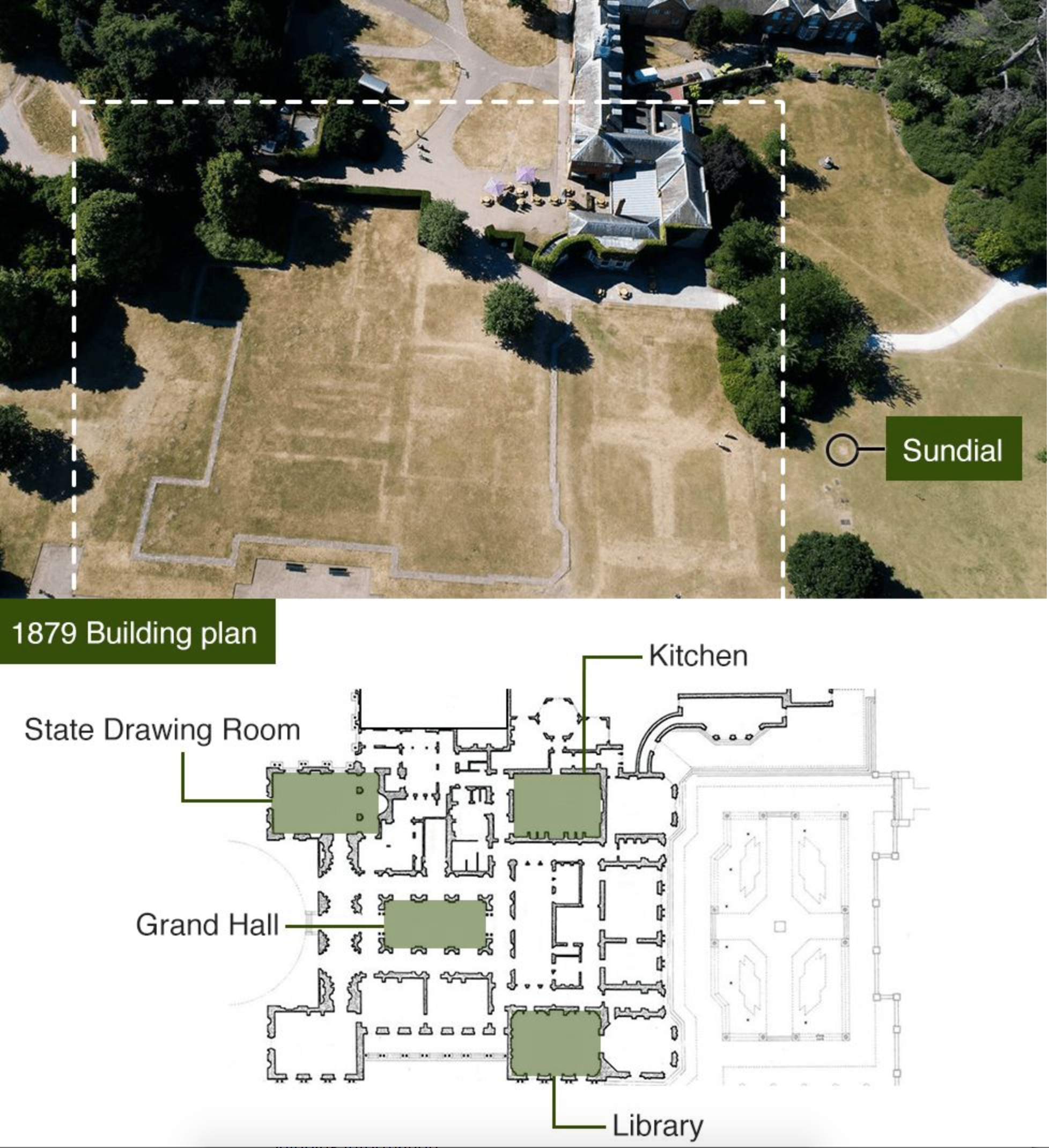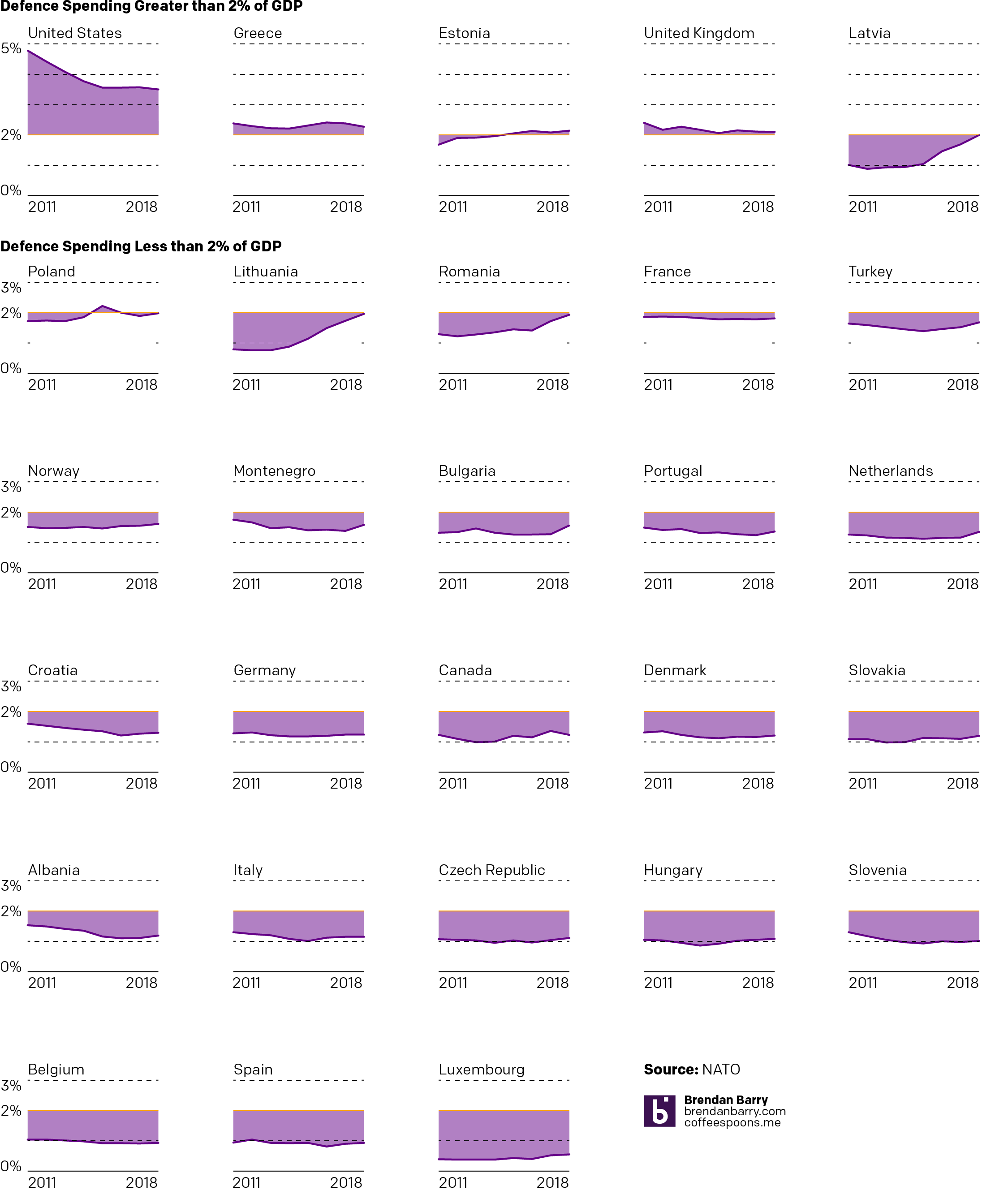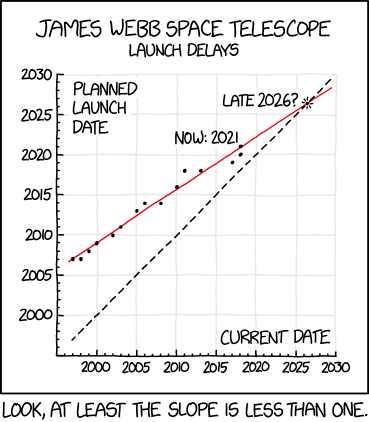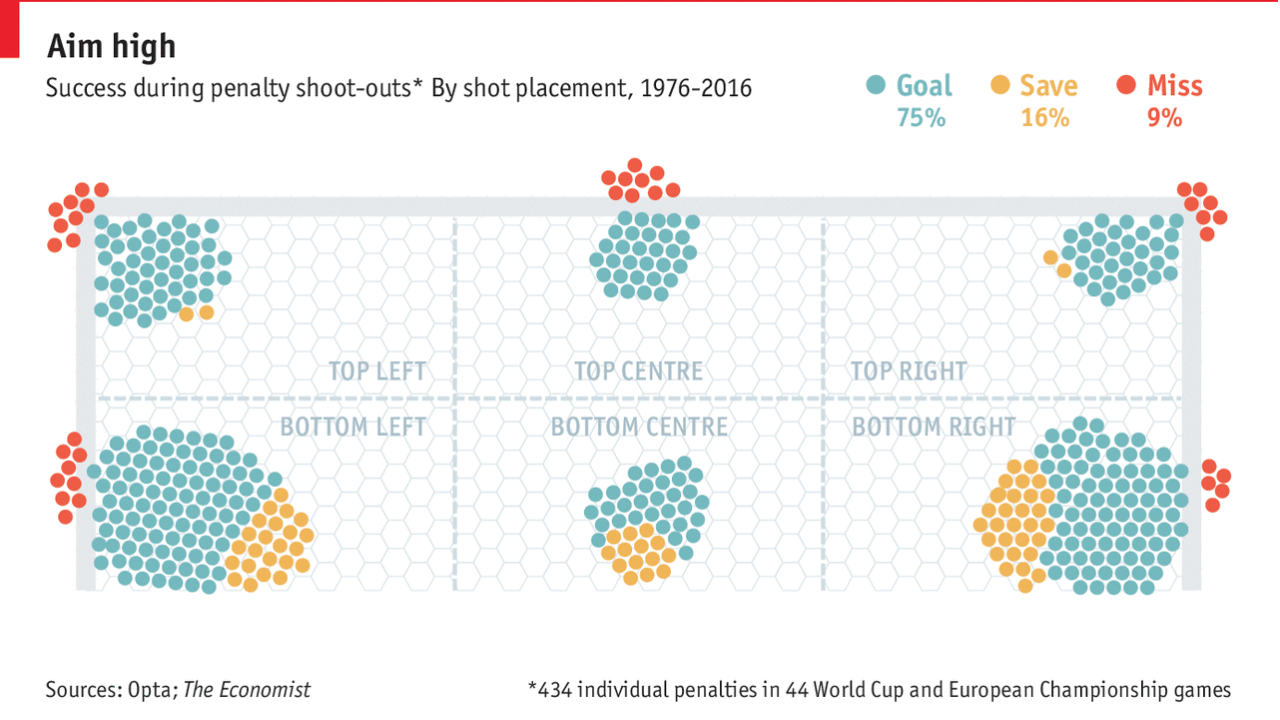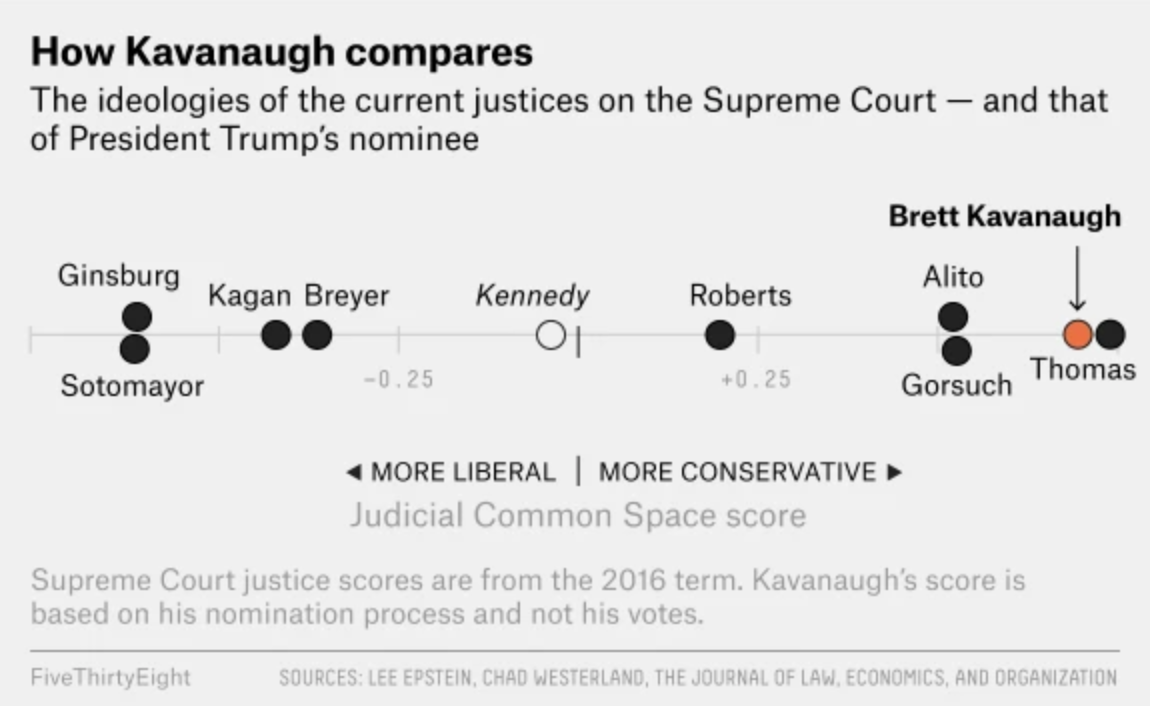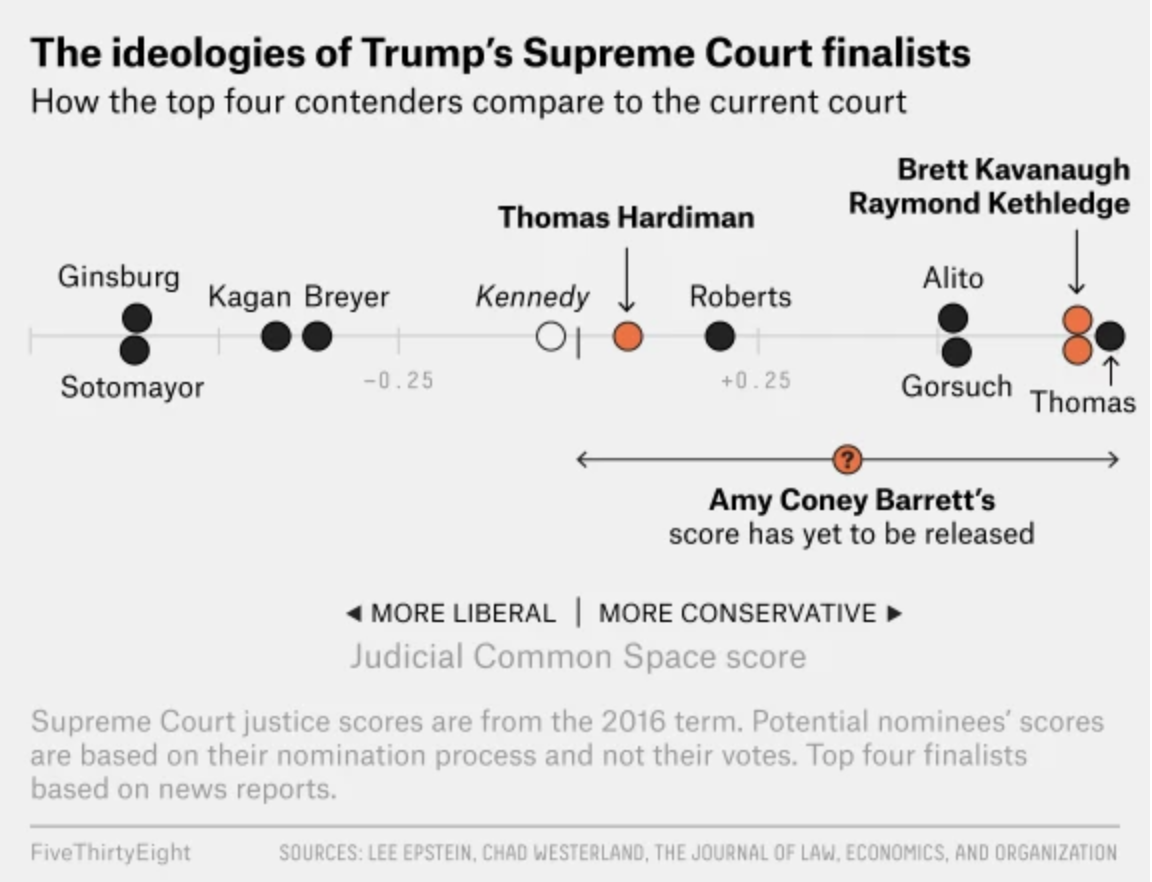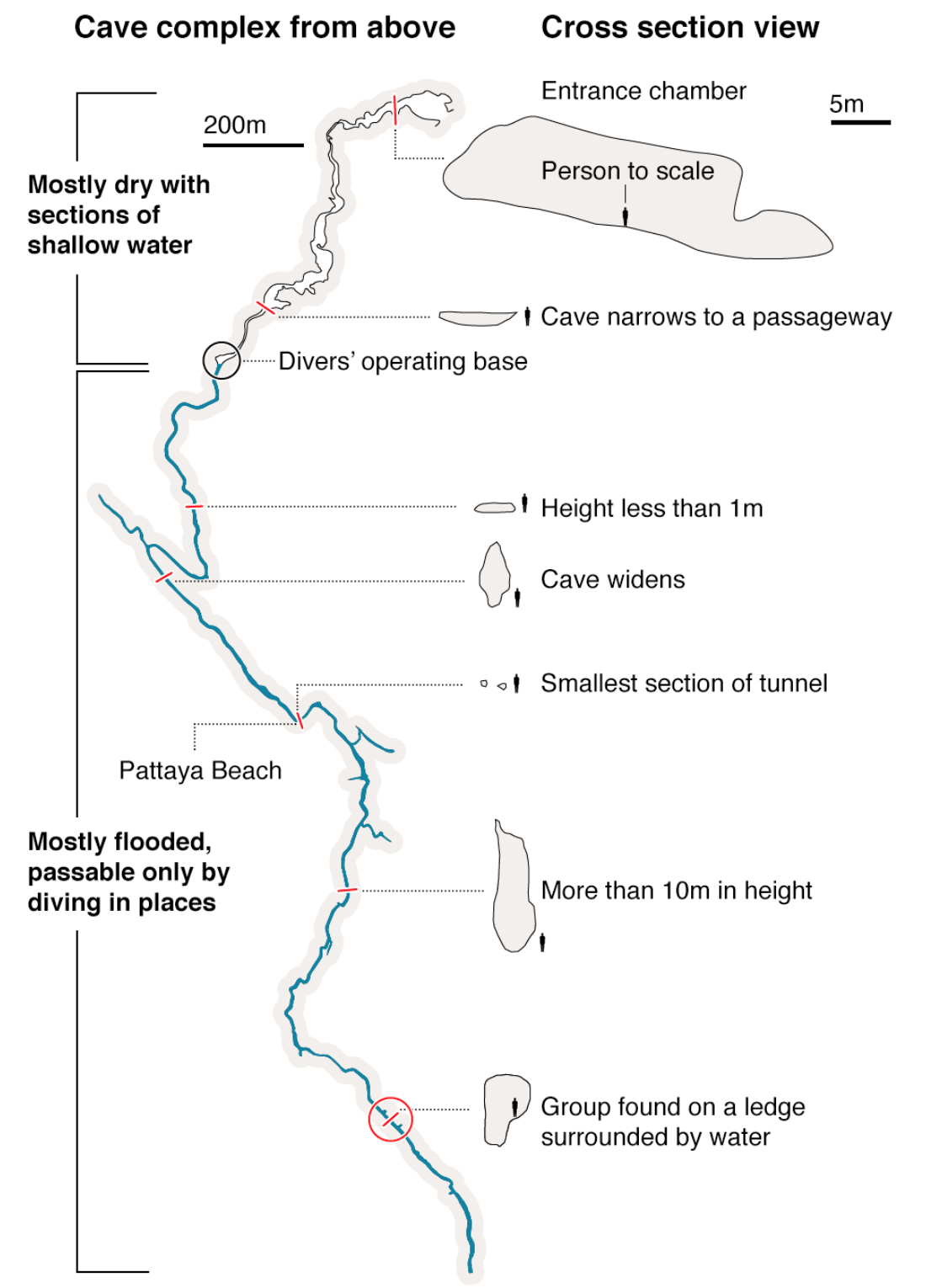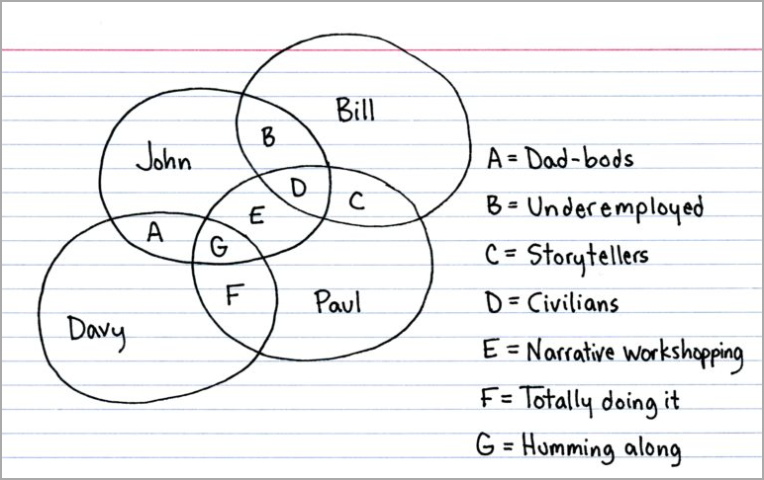Yesterday, space nerds were alerted to the news that 12 new moons have been discovered in orbit of Jupiter. These are much smaller than Jupiter’s moon Ganymede, which is the largest moon in the Solar System and is larger than even Mercury. The point is that there are almost certainly no Ganymede-esque moons orbiting Jupiter that remain undiscovered.
But despite their small size, these moons do have some interesting features, as the article I read in the Guardian pointed out. The most interesting is the orbit of the moons. In general, Jovian moons orbit either prograde, i.e. with the orbit of Jupiter, or retrograde, i.e. against the orbit of Jupiter. The two inner moons discovered are prograde and nine of the other 12 are in an outer orbit of retrograde moons. But Valetudo, the 12th, which orbits in the retrograde group, actually orbits in a prograde fashion. The graphic below from the Carnegie Science Institute does a pretty good job of showing this.
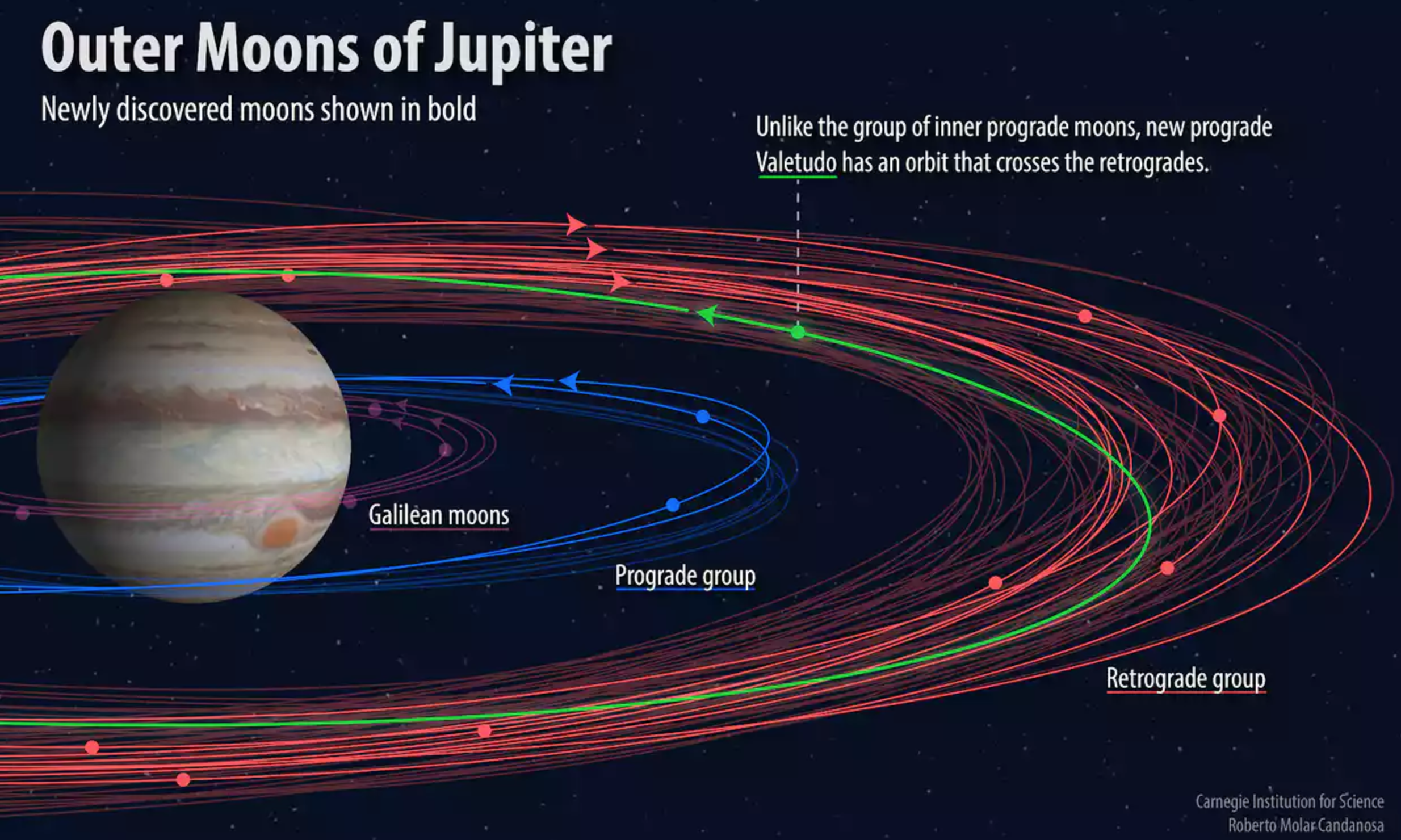
Ultimately this means that at some point in the future, Valetudo will slam head-on collision style with another Jovian moon. And reportedly that will be so intense we will be able to see it from Earth. Bangin’. Catch is that it will not likely happen anytime soon.
As for the graphic above, I am of two minds. I generally like the use of colour. The bright green contrasts starkly against the red—though it should be pointed out it would fail a red-green colour blindness test. And then the interesting, but admittedly less interesting prograde and previously discovered Galilean moons are in more muted blues and purples, which puts them further into the background. It works nicely as a complete package.
But should it be on a deep blue background? Lots of space visualisations use black backgrounds, including my work and the work of others. But sometimes work that uses a white or otherwise light background could more clearly show things like orbits. It is difficult to say with certainty because of the lack of a light background for comparison’s sake.
The other thing that gets to me is the viewing angle of the orbits. Clearly we are looking neither dead-on nor from high above. And that makes it a bit more difficult to compare orbits. Of course these might not all be on the same plane because orbits are in three-dimensional space. But if the orbits were all shown from above, it would certainly aid with problems of foreshortening.
All in all, though, I shan’t complain because we have more moons in the Solar System. And who knows how many more smaller moons both Jupiter and Saturn have.
Credit for the piece goes to Roberto Molar Candanosa.

